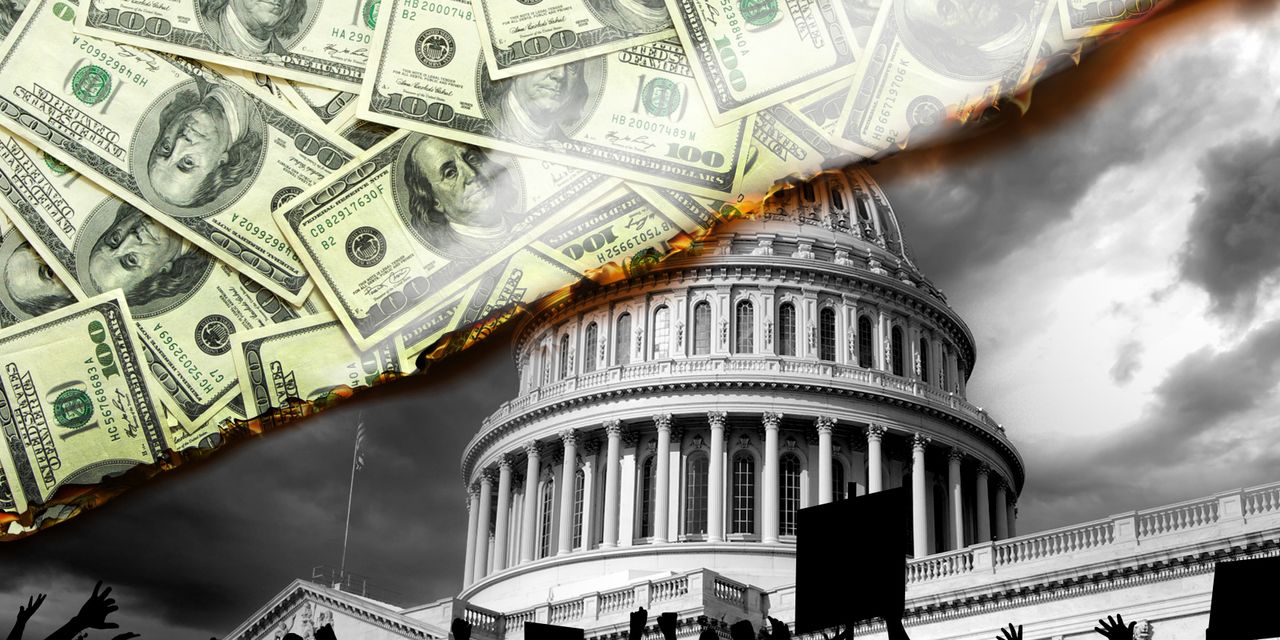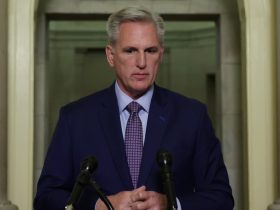Wall Street is bracing for the potential demise of an old regime: The U.S. government’s coveted AAA credit ratings.
Earlier controversies on Capitol Hill over the U.S. debt limit prompted downgrades by S&P Global in 2011 and Fitch Ratings in August to AA+ from AAA, leaving Moody’s Investors Service as the only major credit-rating firm applying its top credit ratings to the U.S. But perhaps not for long.
The dramatic end on Tuesday of Republican Rep. Kevin McCarthy’s short-lived run as U.S. House Speaker has Wall Street on edge about the threat of yet another government shutdown, potentially in mid-November, when a 45-day temporary spending bill is set to run out.
Another shutdown would cast doubt on the ability of the U.S. to retain its last batch of unblemished credit ratings, a go-to gauge of its trustworthiness on the global stage. It also could further rattle the roughly $25 trillion U.S. Treasury market, where yields recently surged to a 16-year high.
See: Rising Treasury yields are upsetting financial markets. Here’s why.
Moody’s warned in late September that a government shutdown “would be a credit negative for the U.S. sovereign.” The rating firm also said “intensifying political polarization” was a concern, as well as fiscal policy-making that’s “less robust” in the U.S. than in many of its AAA-rated peers, including Germany and Canada.
McCarthy was ousted after he relied on House Democrats to pass a last-ditch effort to thwart a partial government shutdown. The problem is, the “continuing resolution” buys only so much time.
Amar Reganti, a fixed-income strategist for Hartford Funds, said the guidance Moody’s gave ahead of the stopgap funding measure echoed language used a decade ago by S&P Global in its downgrade, which could signal its readiness to pull the trigger on a U.S. downgrade if a shutdown comes to pass.
“That AAA rating could be at risk,” Reganti said.
He said Moody’s, like S&P Global, may be placing less focus on the sustainability of U.S. debt, which has now topped $33 trillion, than on dysfunction in the “decision-making process” of elected officials. Moody’s declined to comment.
Fitch weighs in
S&P Global in 2011 said policy-making had become “less stable, less effective and less predictable” than previously believed.
The firm declined to comment on how fresh confusion in Washington might impact its U.S. credit ratings, which in March were affirmed at AA+, with a stable outlook.
Not all of the credit-rating firms, however, remained silent on the latest ruckus in Washington. “Given the fact that the House speaker was ousted after the [continuing resolution] was agreed, we expect that political brinkmanship around government-funding negotiations will remain tense and a shutdown later this year can’t be ruled out,” said Richard Francis, co-head of Americas sovereigns at Fitch Ratings, in an email to MarketWatch.
Francis also pointed out that Congress thus far has failed to pass any of its 12 appropriations bills and that “stark disagreements over appropriations” have erupted both within the House of Representatives and between the House and the Senate.
Read: Fed’s inflation fight could be complicated by political chaos in Washington
However, Francis doesn’t expect “political brinkmanship or even a government shutdown in the coming weeks” to effect Fitch’s AA+ ratings for the U.S. or its stable outlook.
Walid Koudmani, chief market analyst at XTB, said the U.S. could still be “a few steps away” from another cut to its credit ratings, given the recent Fitch downgrade, but that it “also seems events are leading in that direction.”
Even so, the outsize footprint of U.S. debt in the plumbing of global financial markets might matter more than its credit ratings, particularly with post-2008 reforms de-emphasizing the importance of credit ratings.
“It’s an ubiquitous instrument that is in every nook and cranny of our financial system,” Hartford’s Reganti said. He also thinks a third U.S. downgrade would “most likely be an unpleasant event, but the market memory of it would be pretty short.”
Moody’s is often credited with creating the bond-rating business a century ago, but how long has it been rating the U.S. at AAA? That’s a tougher question to answer precisely, Moody’s said, because it would involve a walk through archives, factoring in changes to the U.S. economy over past decades, changing ratings methodologies, and the evolving regulatory landscape for credit-rating firms. However, Moody’s affirmed the U.S. Aaa ratings about a year ago.
Even before the latest political trouble in Congress, the 10-year Treasury yield
BX:TMUBMUSD10Y
had been sharply climbing, making it more expensive for the U.S. government to borrow. The latest repricing in the world’s biggest bond market has been partly attributed to the Federal Reserve’s actions in late September, when it signaled that interest rates could stay higher for longer than previously anticipated.
But all eyes are now on the 5% level for the 10-year Treasury yield, even as it was easing back to 4.7% on Thursday, after touching an intraday high of 4.89% earlier this week, according to FactSet.
—-William Watts contributed reporting
Read the full article here











Leave a Reply